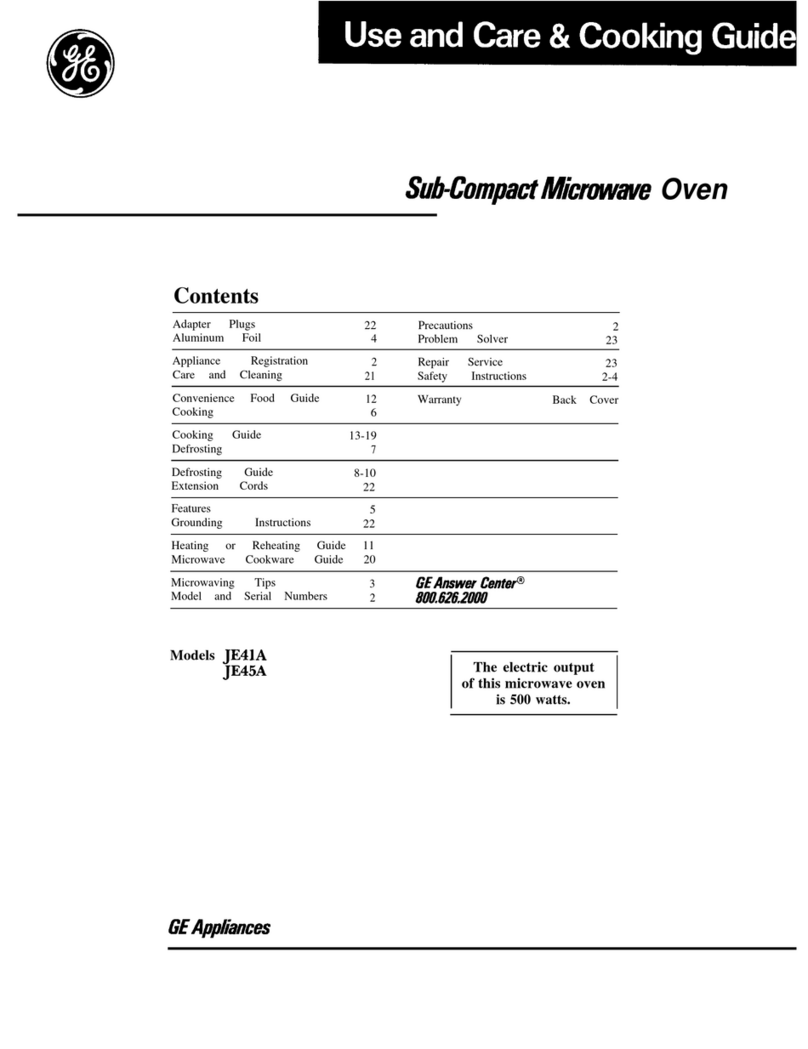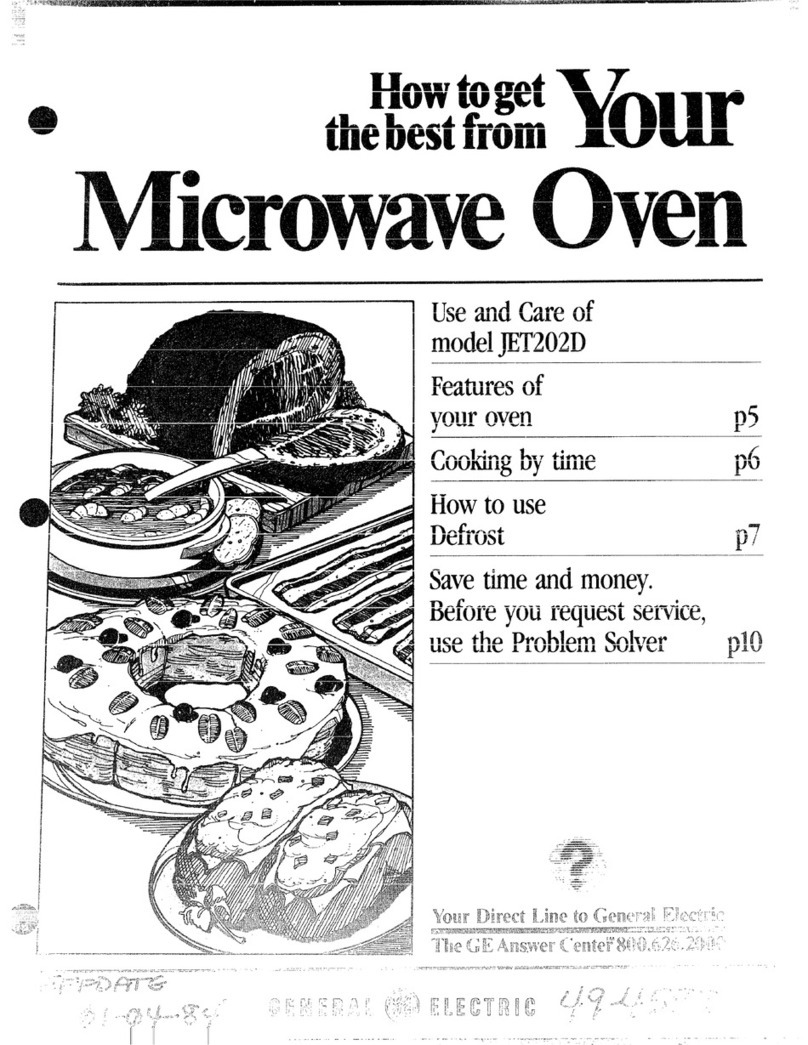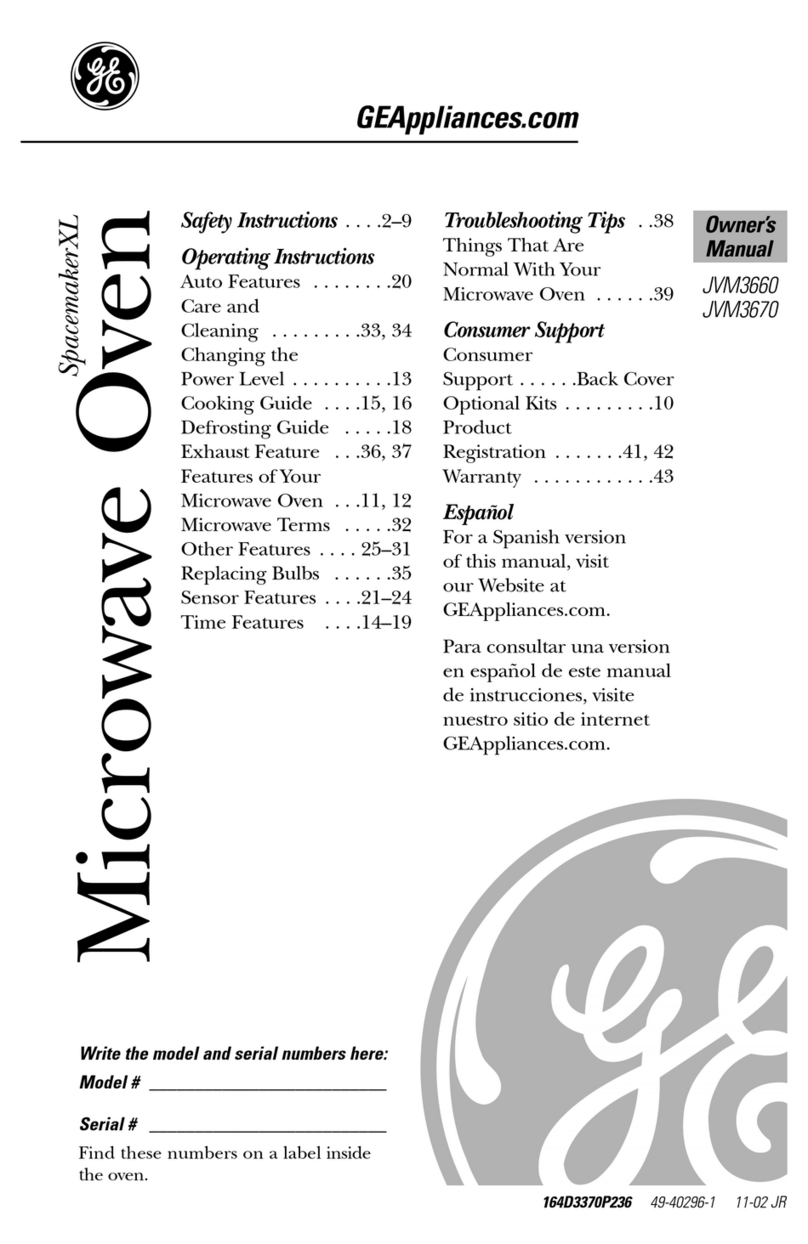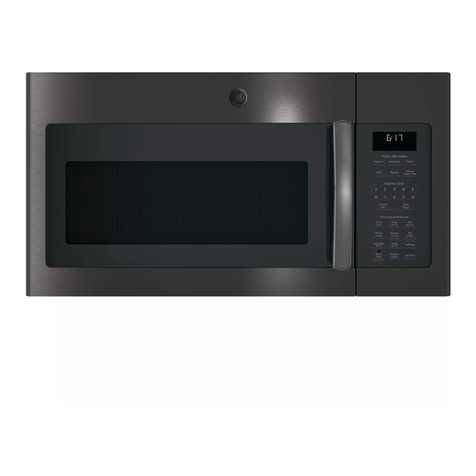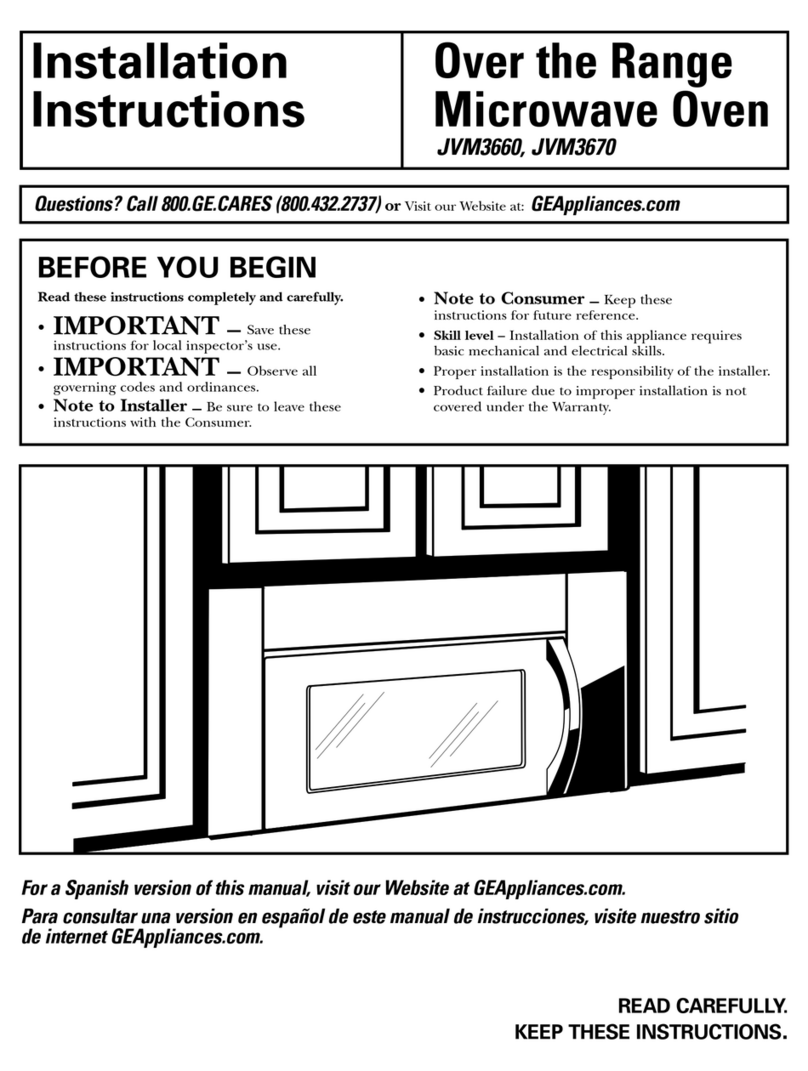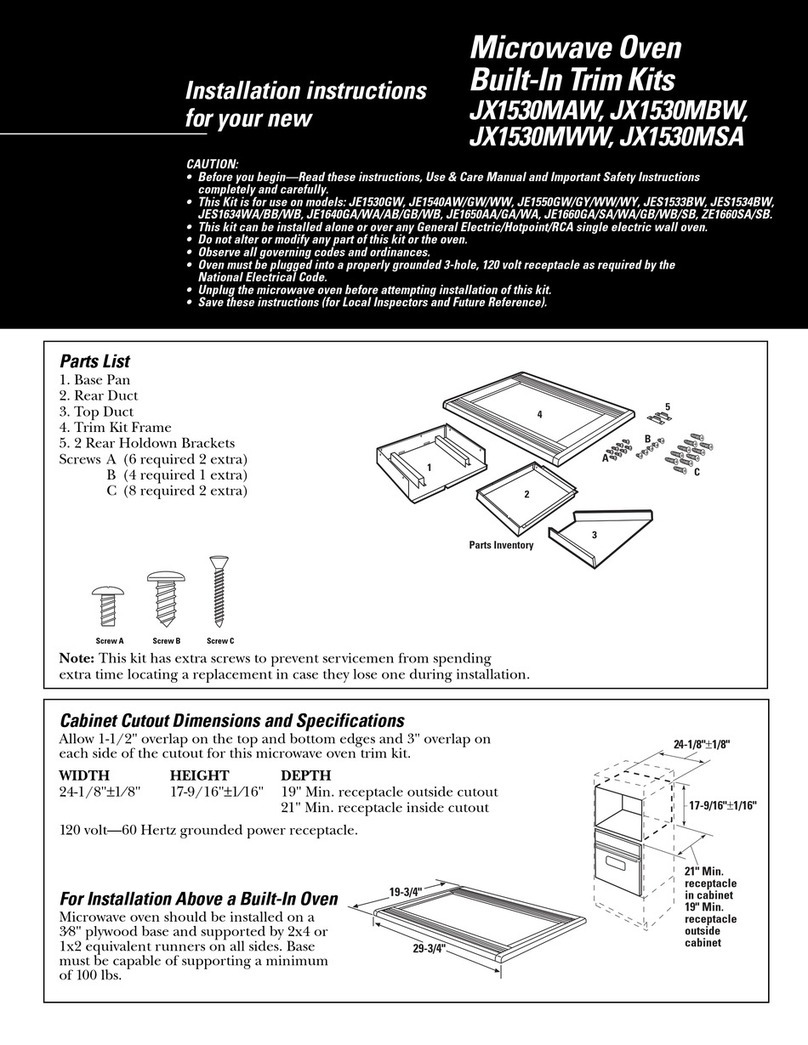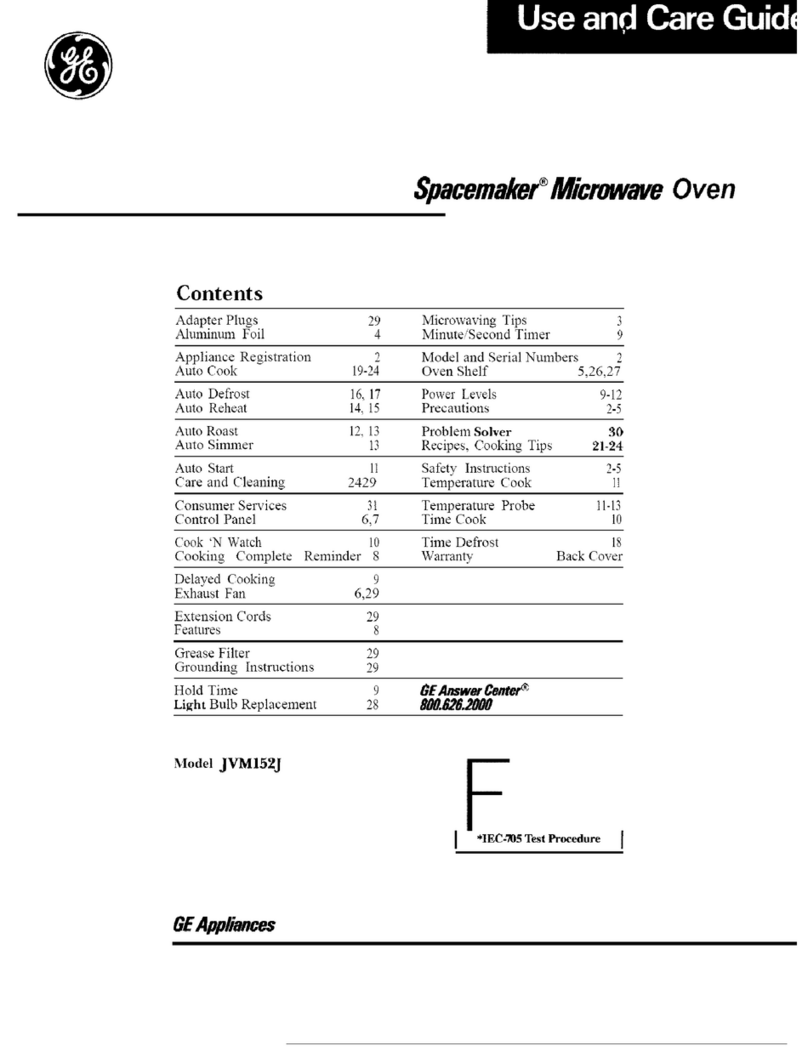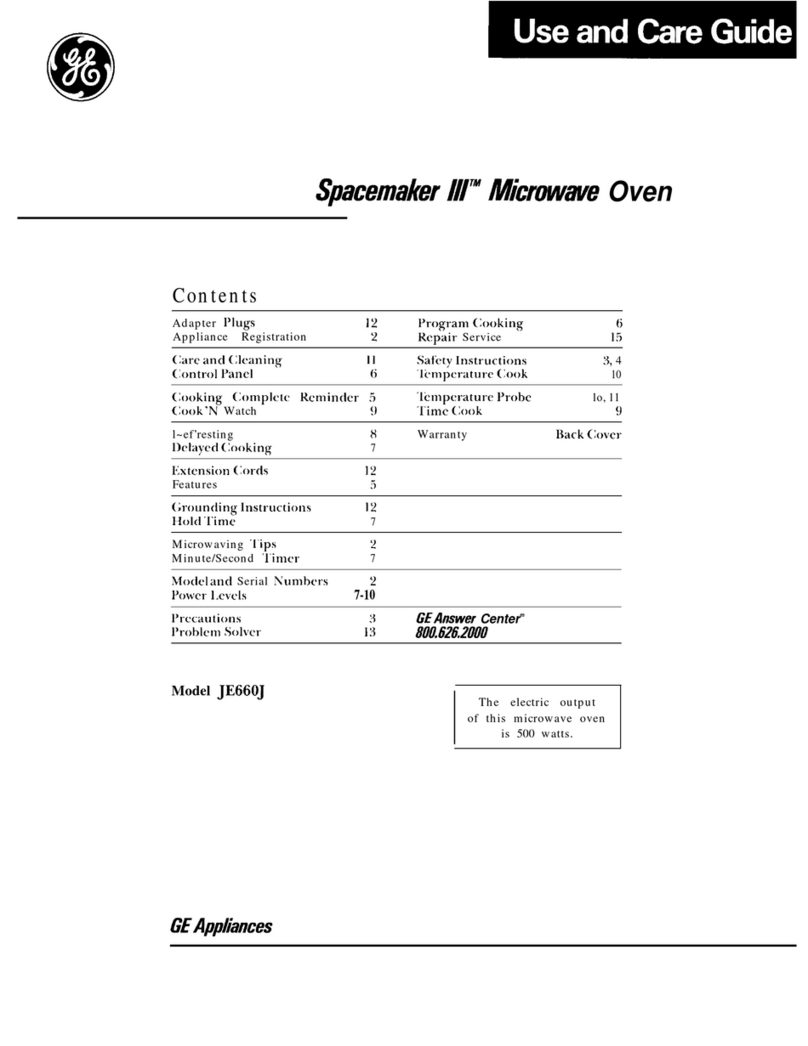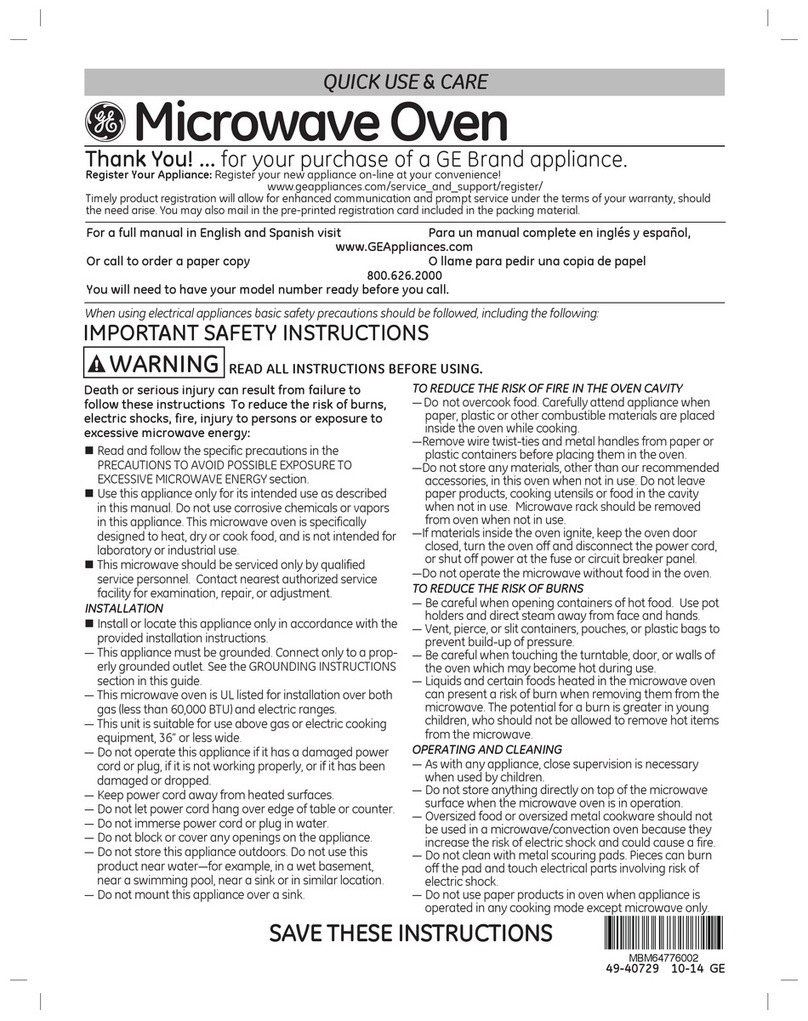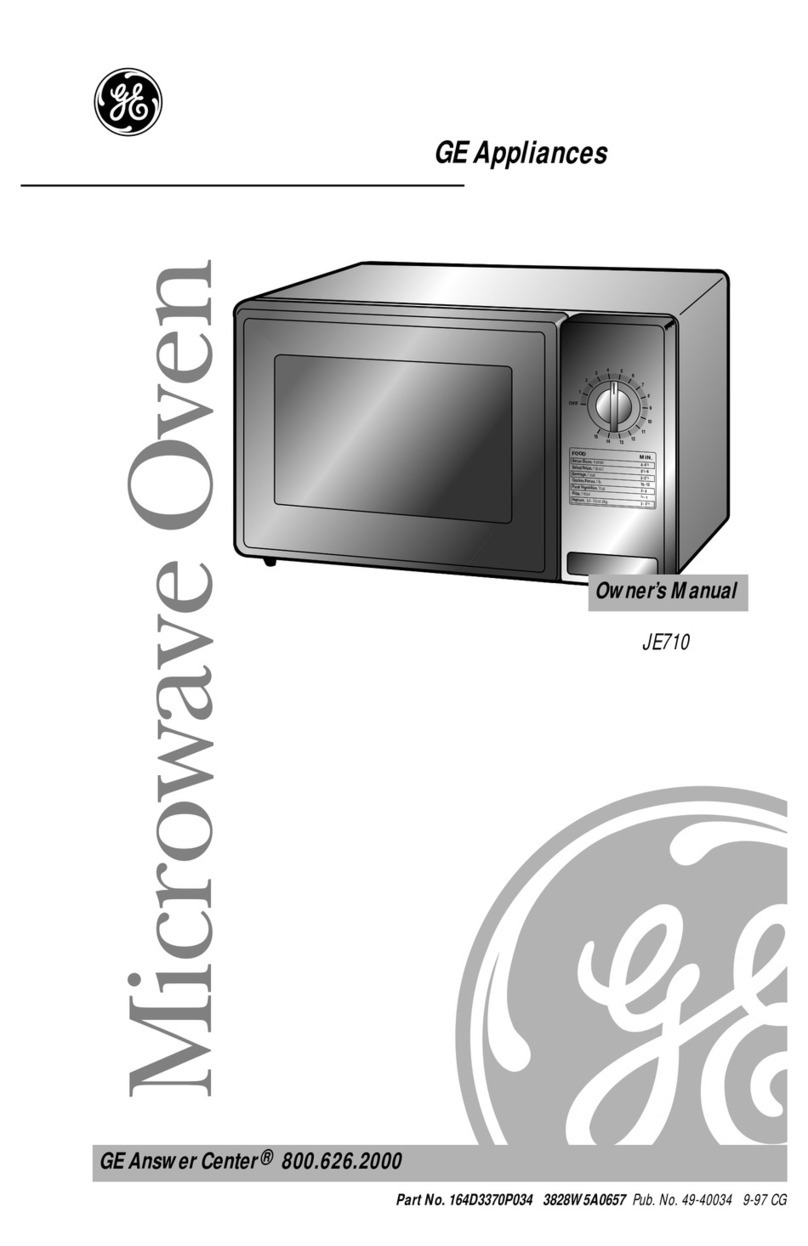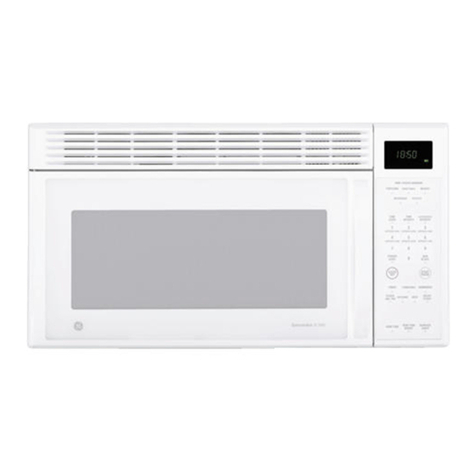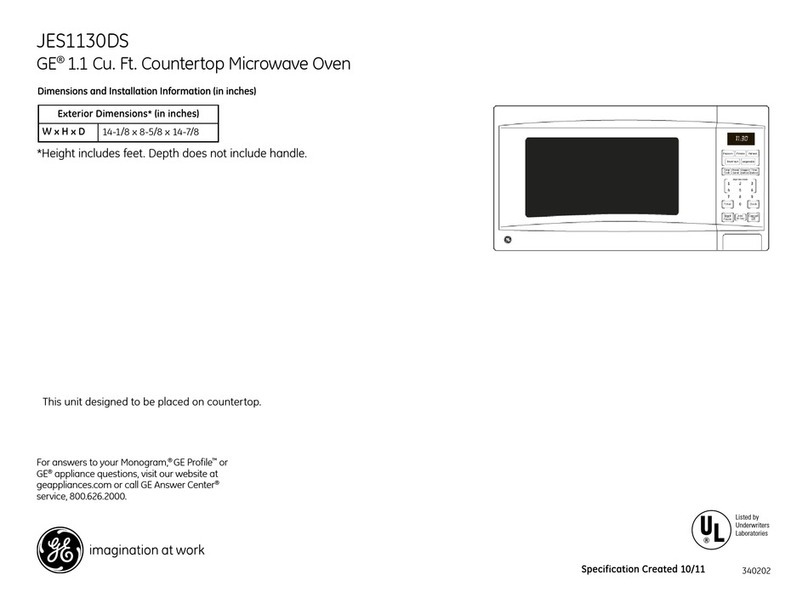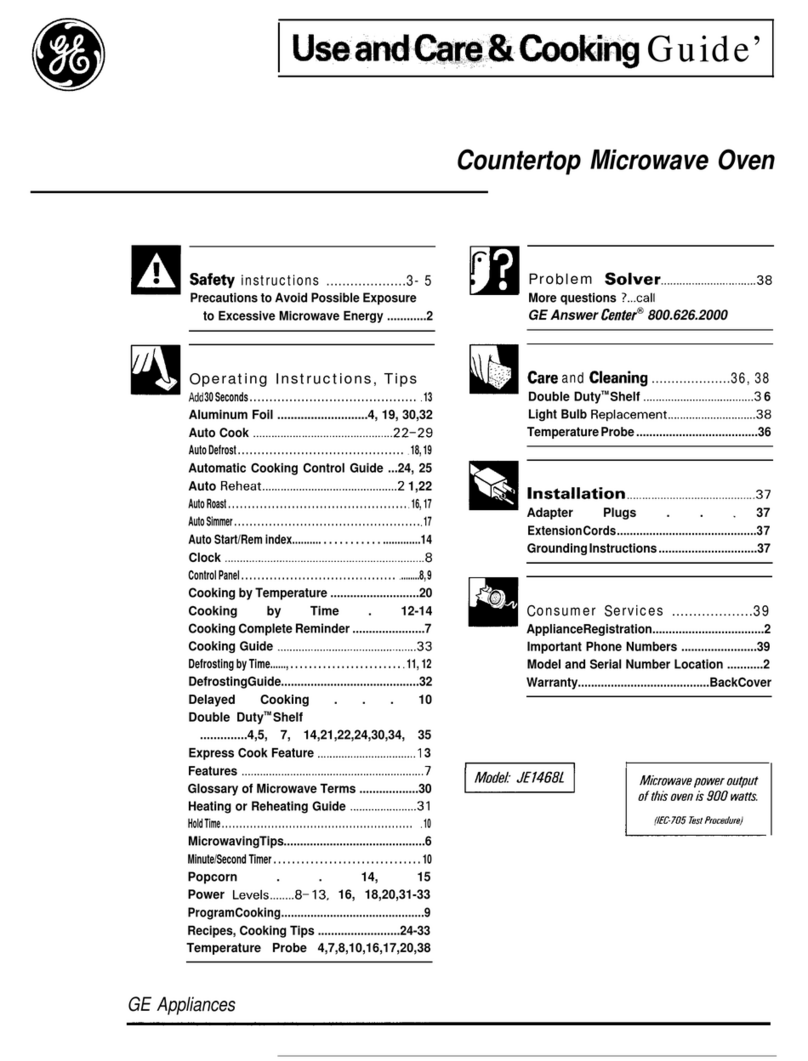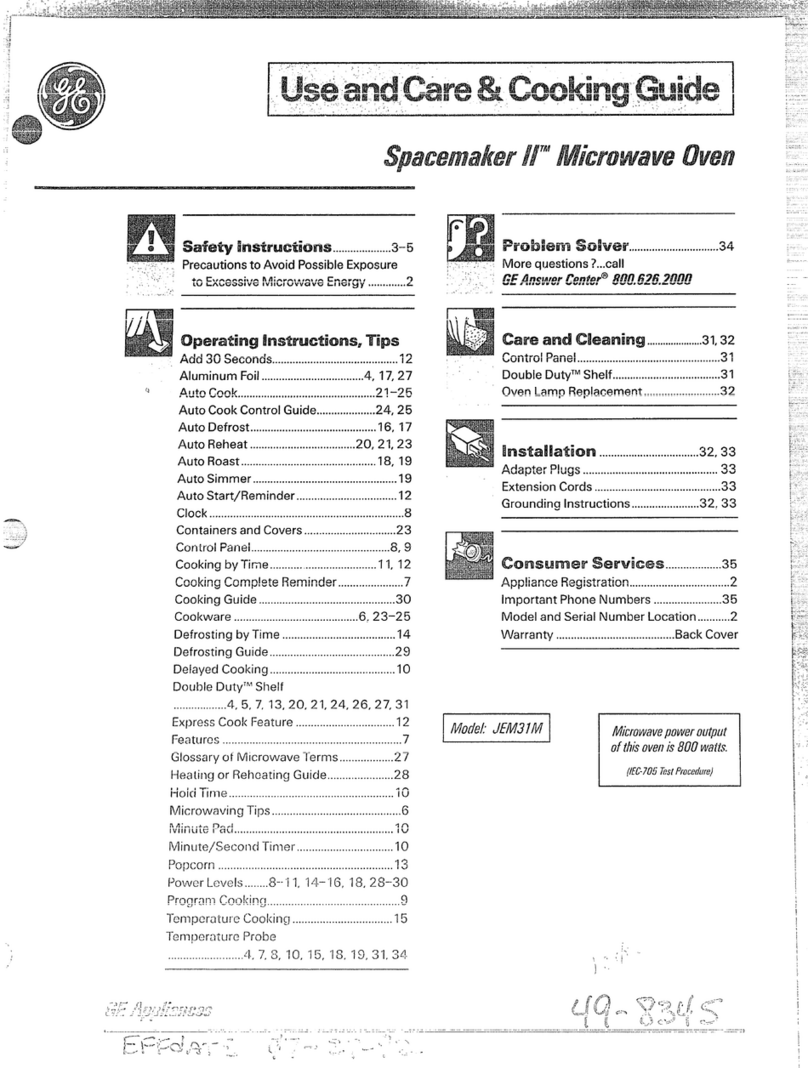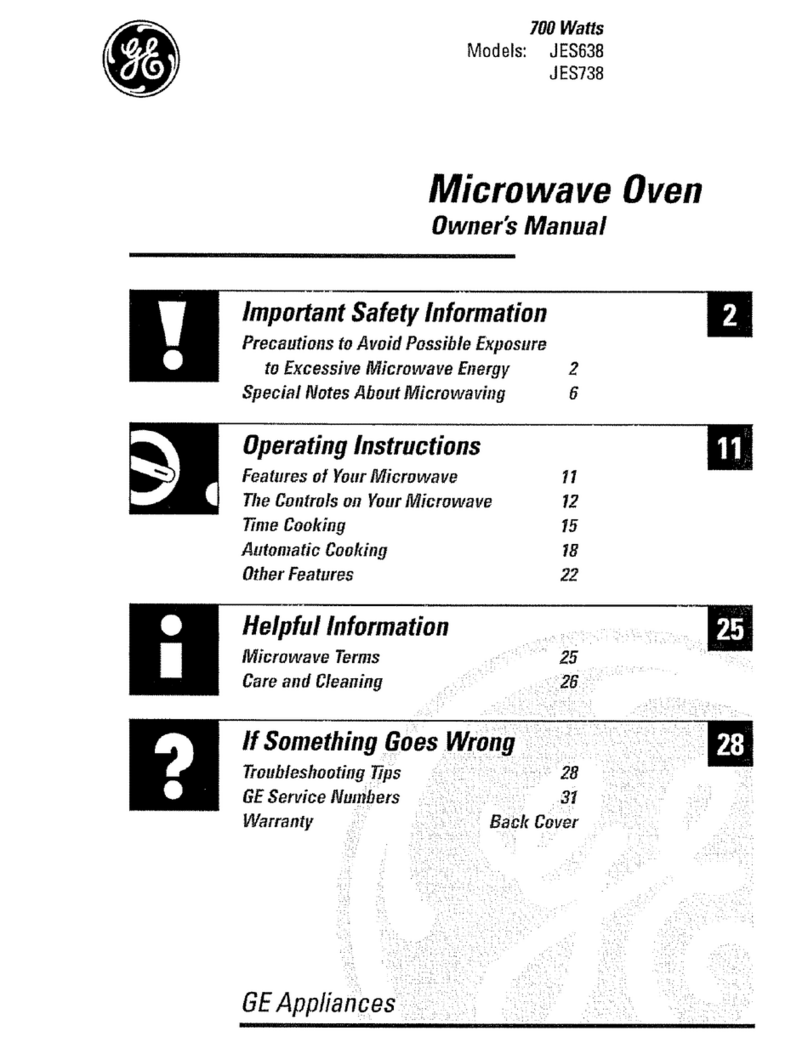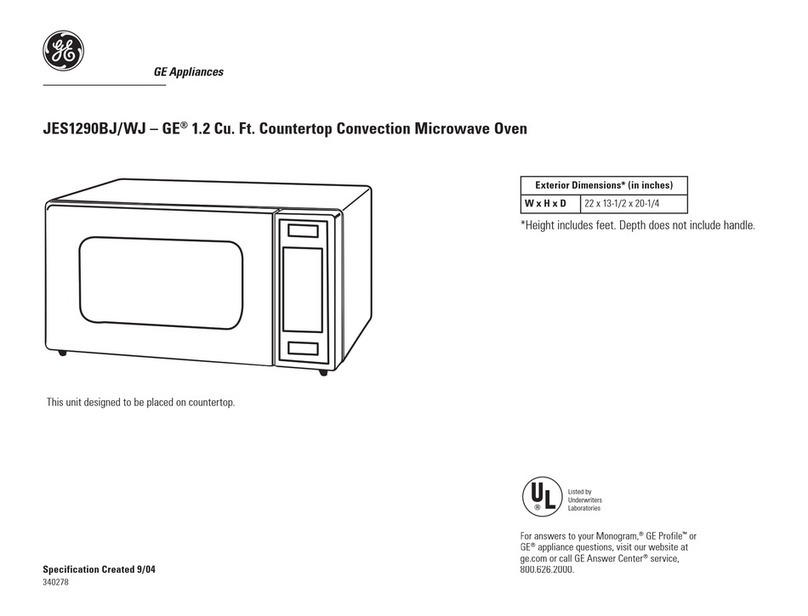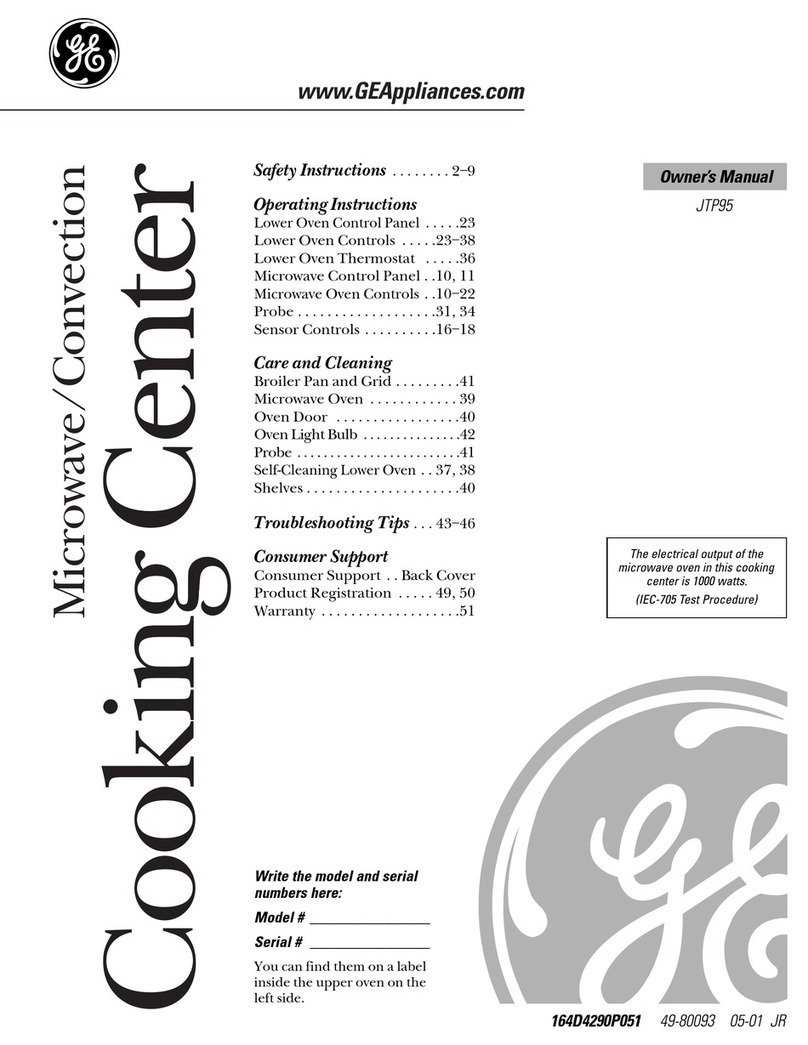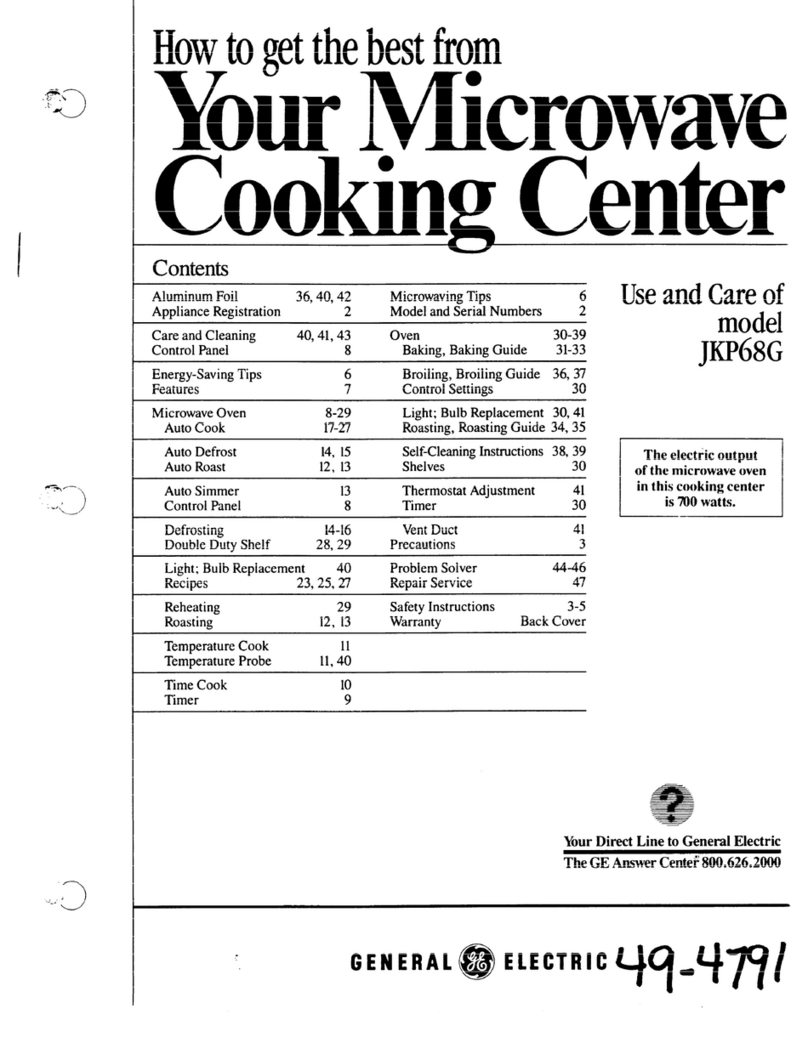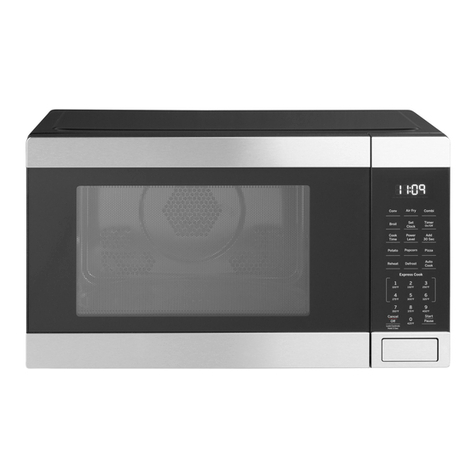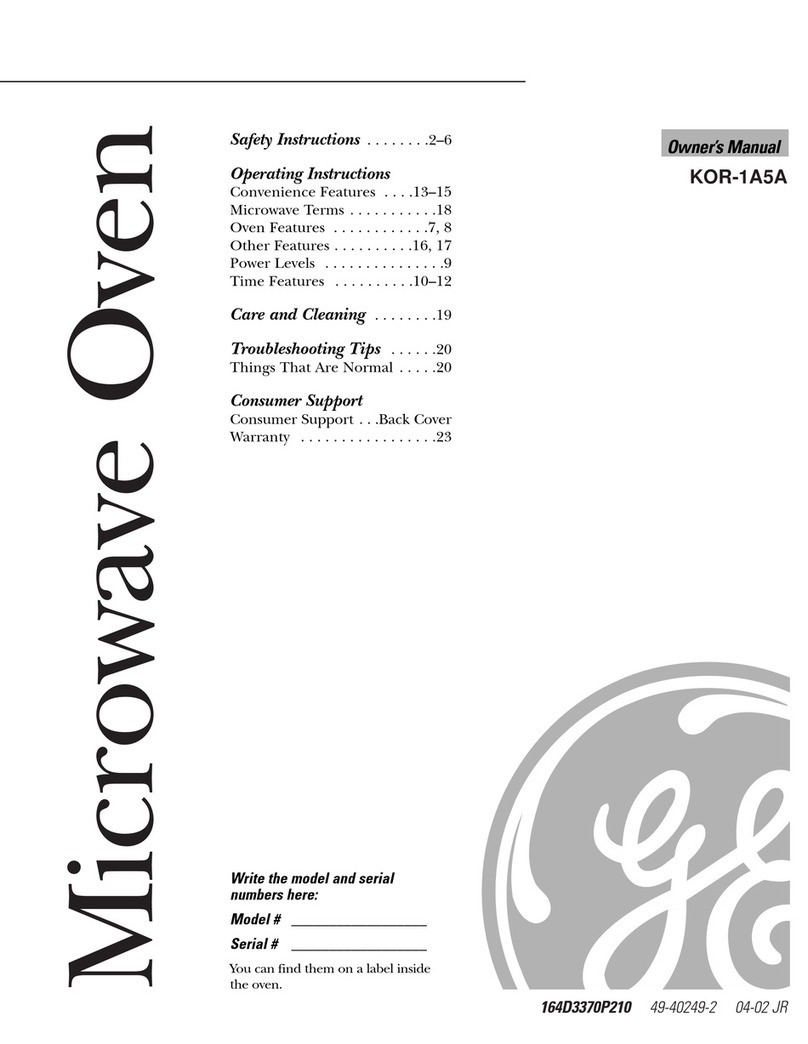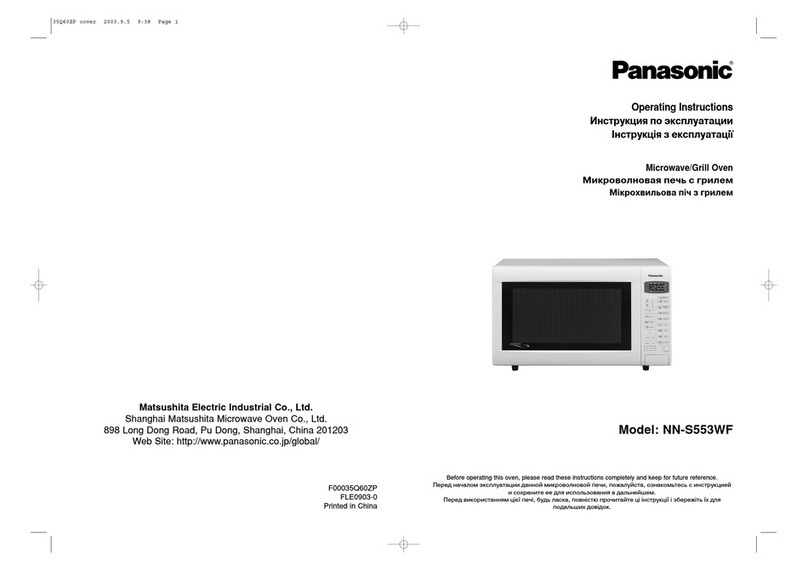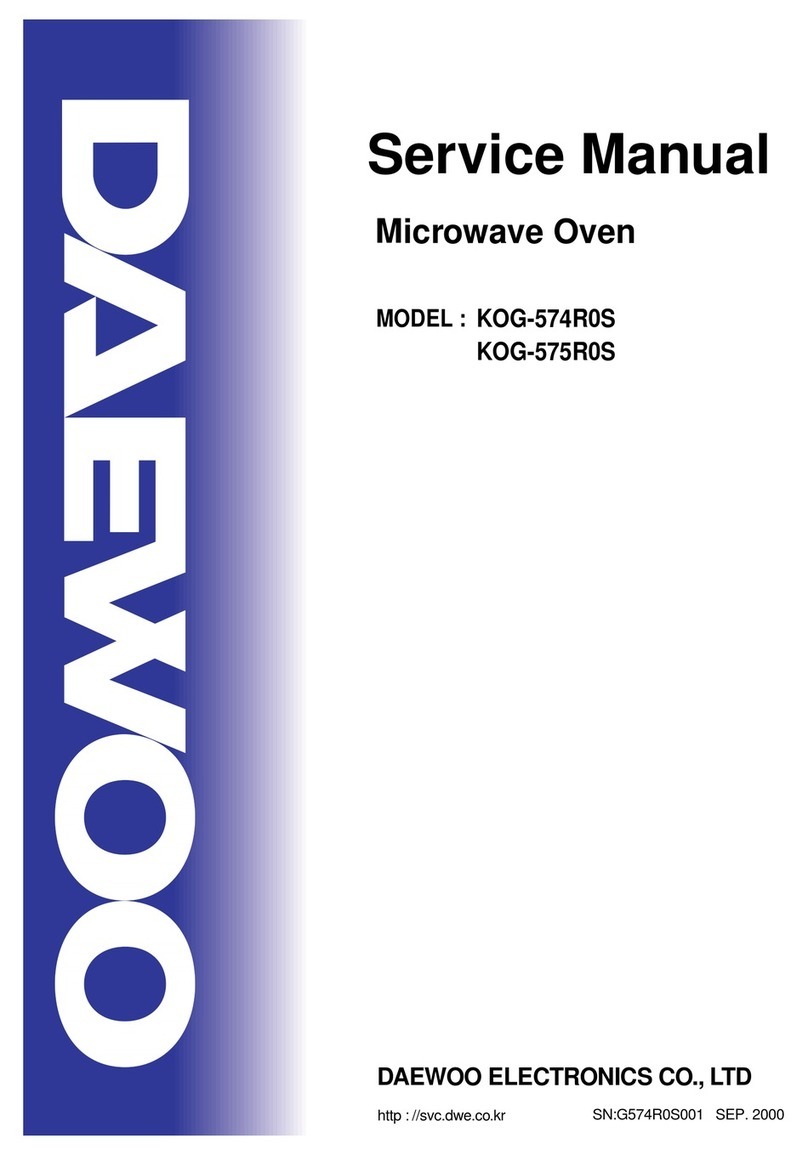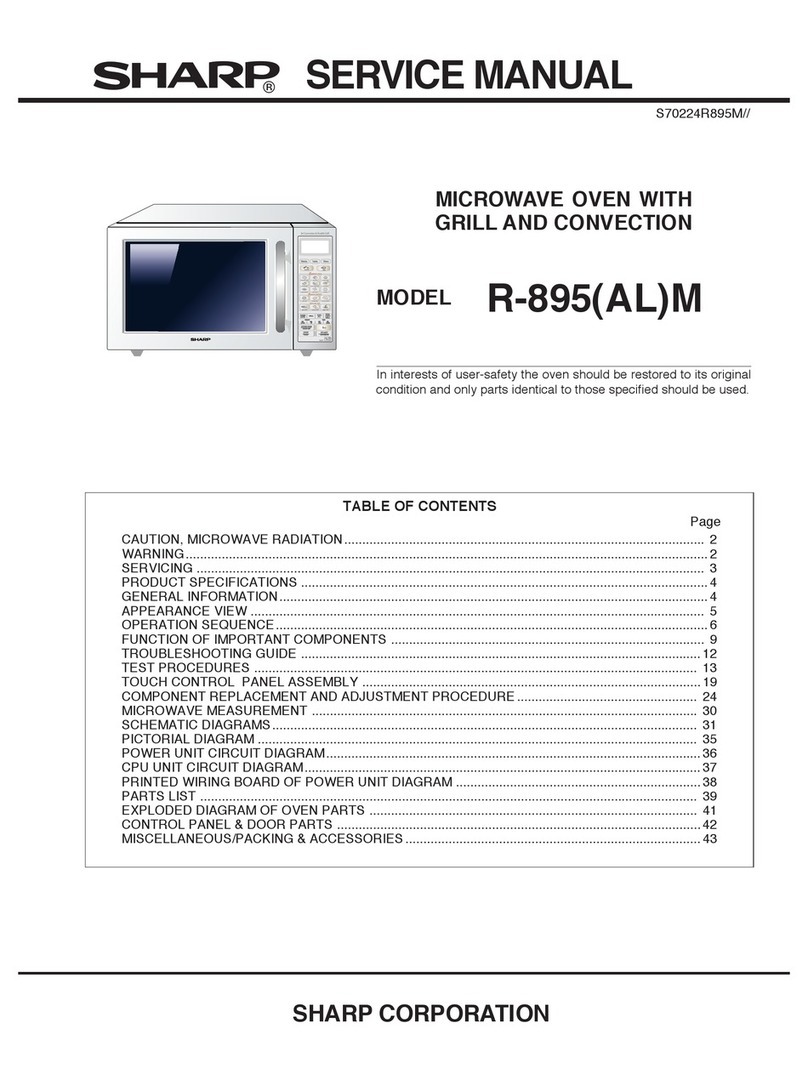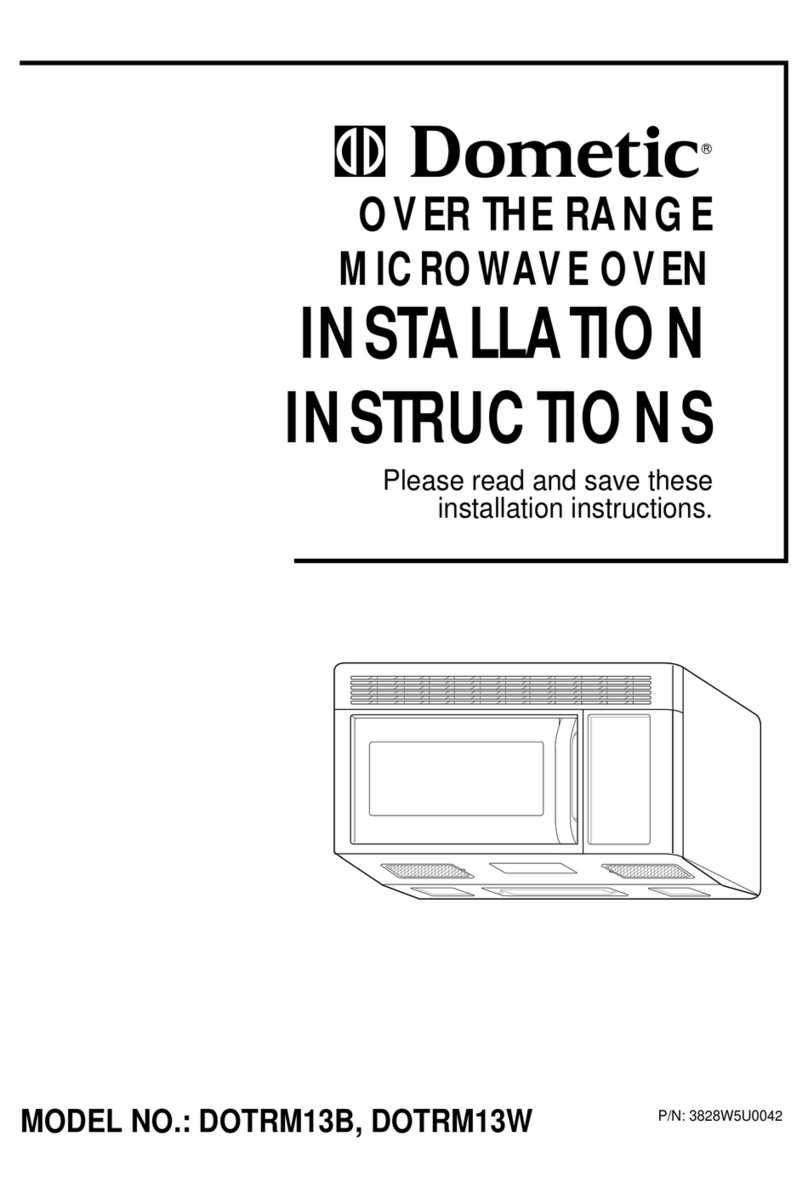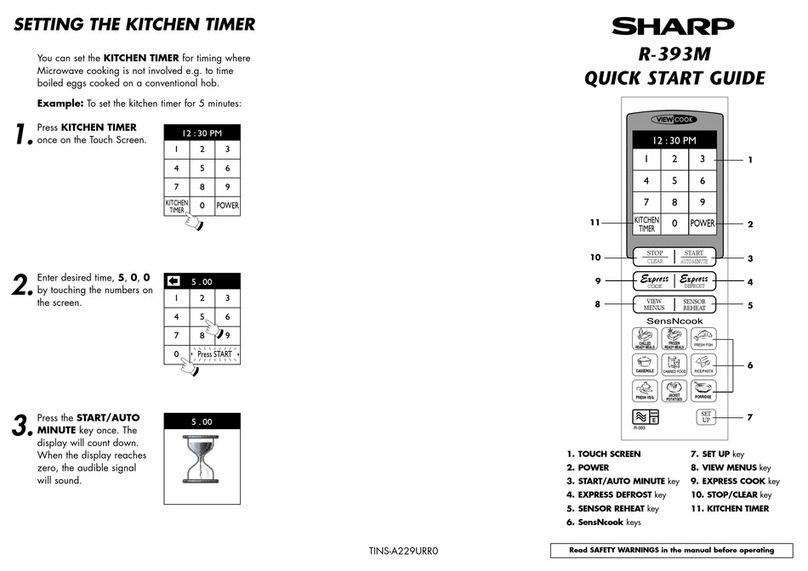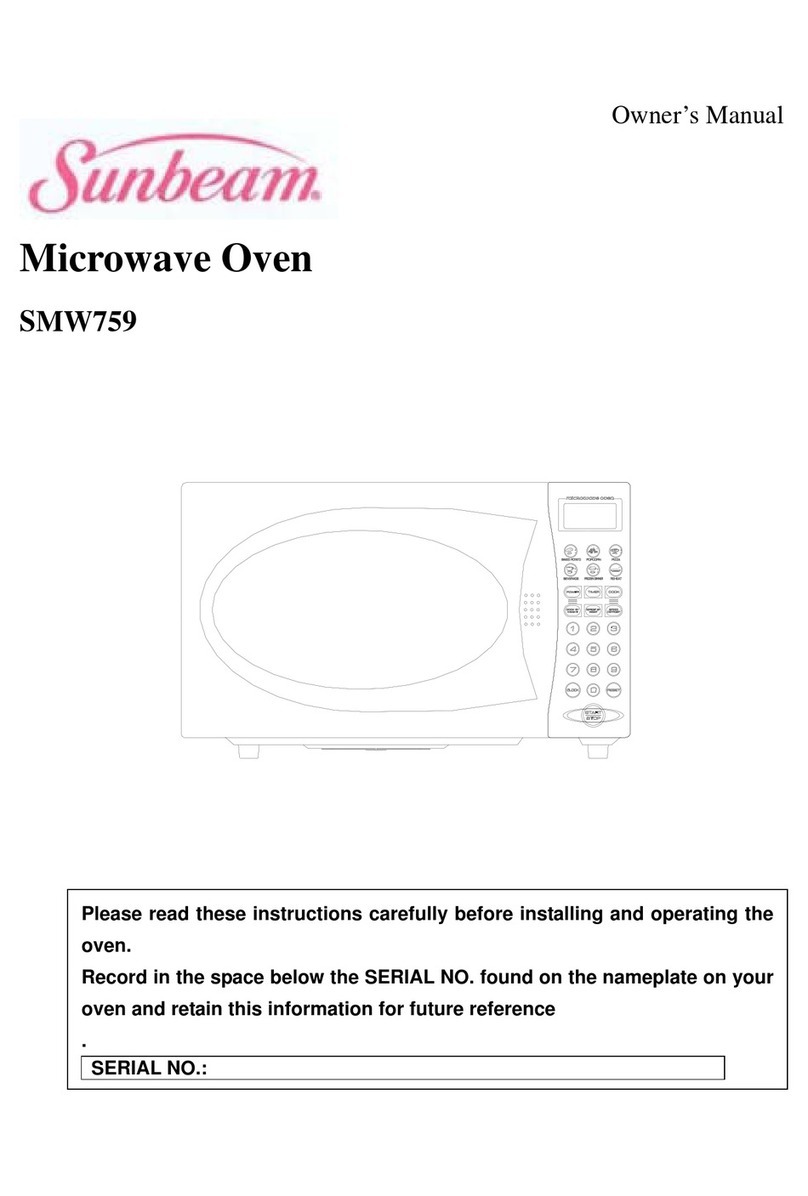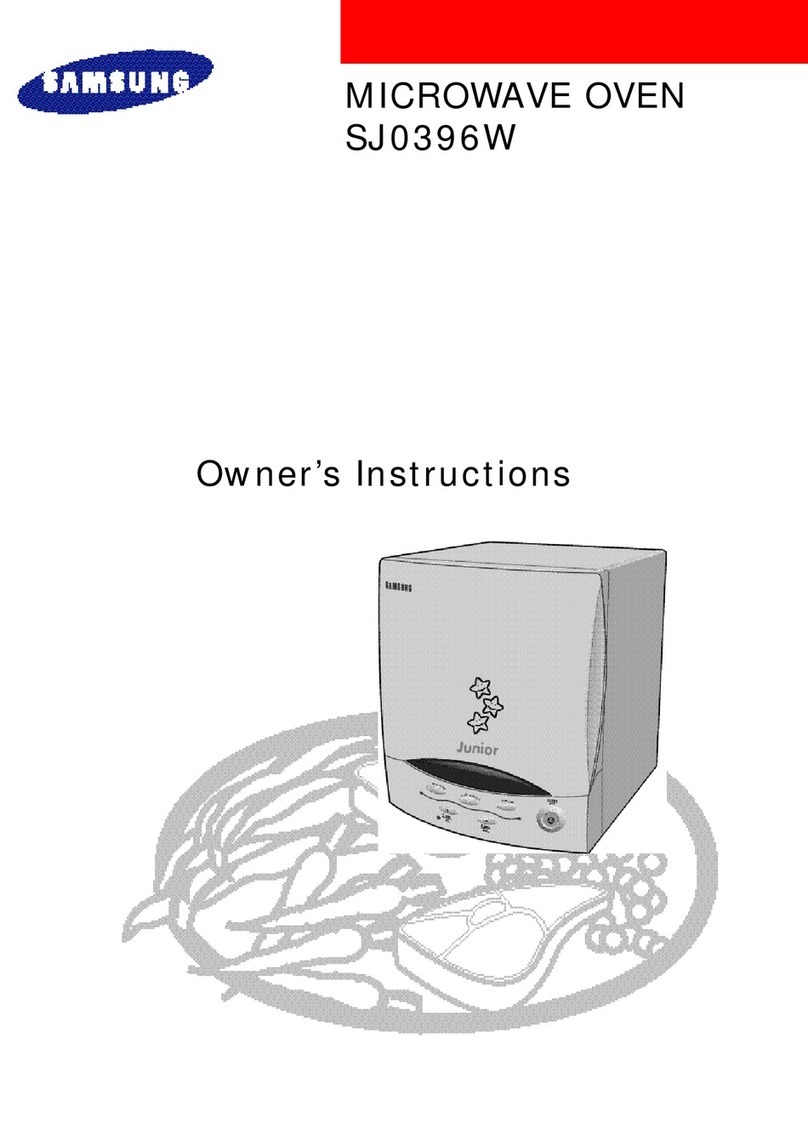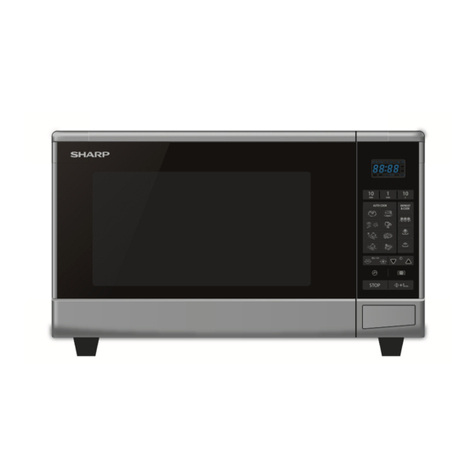www.GEAppliances.com
3
Consumer SupportTroubleshooting TipsOperating InstructionsSafety Information
Use this appliance only for its intended purpose as
described in this Owner’s Manual.
■Do not mount this appliance
over a sink.
■Do not mount the microwave
oven over or near any portion
of a heating or cooking
appliance.
■Do not store anything directly
on top of the microwave oven
surface when the microwave
oven is in operation.
■Do not operate this appliance
if it has a damaged power
cord or plug, if it is not
working properly, or if it has
been damaged or dropped.
■Do not cover or block any
openings on the appliance.
■Use this appliance only for its
intended use as described in
this manual. Do not use
corrosive chemicals or vapors
in this appliance. This
microwave oven is specifically
designed to heat, dry or cook
food, and is not intended for
laboratory or industrial use.
■Do not store this appliance
outdoors. Do not use this
product near water—for
example, in a wet
basement, near a swimming
pool or near a sink.
■Keep power cord away from
heated surfaces.
■Do not immerse power cord
or plug in water.
■Do not let power cord hang
over edge of table or counter.
■To reduce the risk of fire in
the oven cavity:
— Do not overcook food.
Carefully attend appliance
if paper, plastic or other
combustible materials are
placed inside the oven while
cooking.
— Remove wire twist-ties and
metal handles from paper
or plastic containers before
placing them in the oven.
— Do not use the oven for
storage purposes. Do not
leave paper products,
cooking utensils or food in
the oven when not in use.
— If materials inside the oven
should ignite, keep the oven
door closed, turn the oven off
and disconnect the power
cord, or shut off power at the
fuse or circuit breaker panel.
If the door is opened, the fire
may spread.
■See door surface cleaning
instructions in the
Care and
cleaning of the microwave
oven
section of this manual.
■This appliance should be
serviced only by qualified
service personnel. Contact
nearest authorized service
facility for examination,
repair or adjustment.
■As with any appliance, close
supervision is necessary
when used by children.
